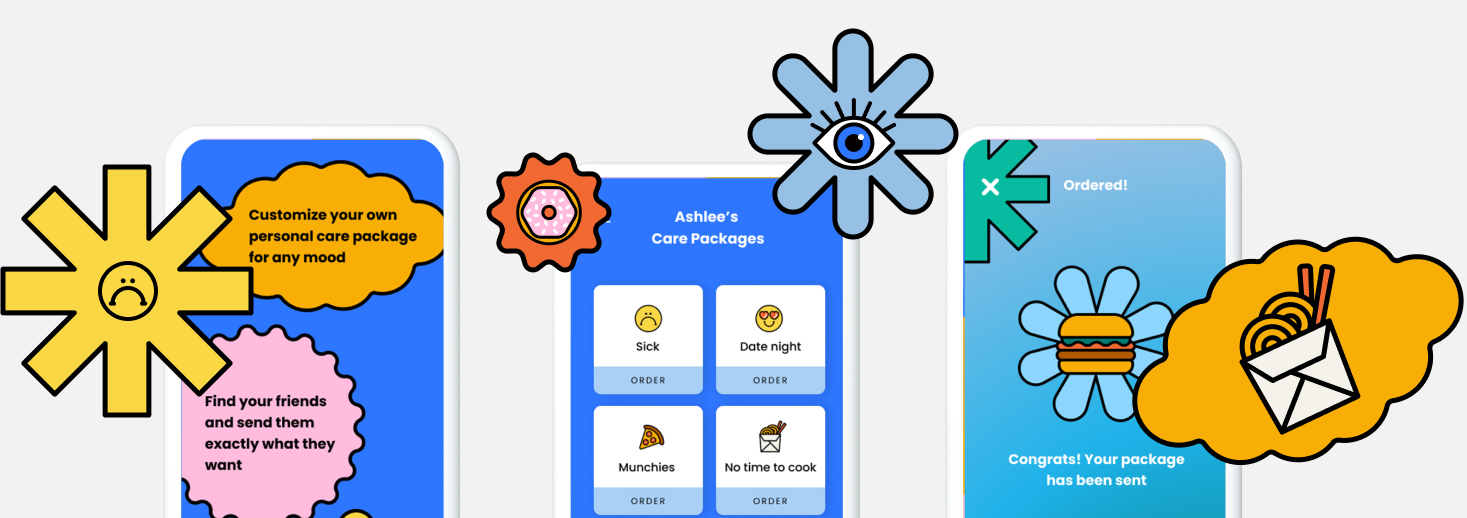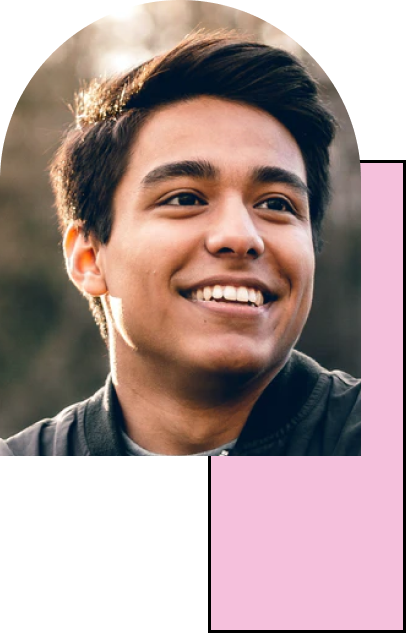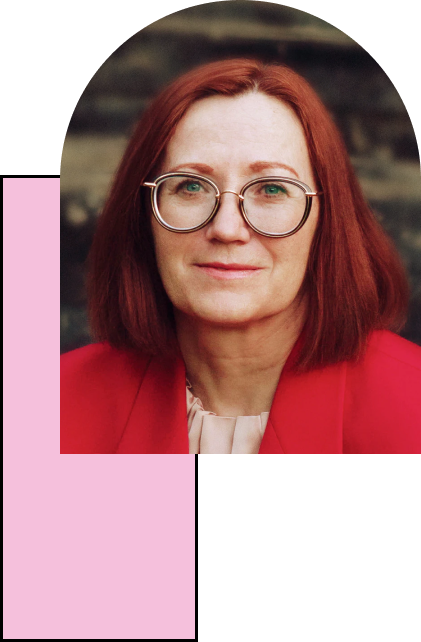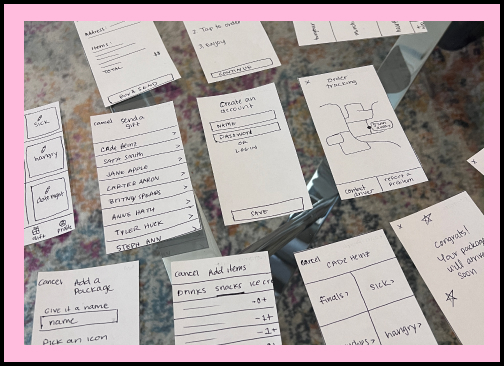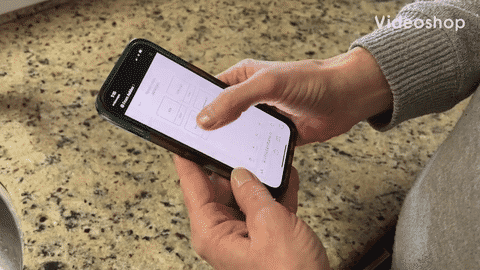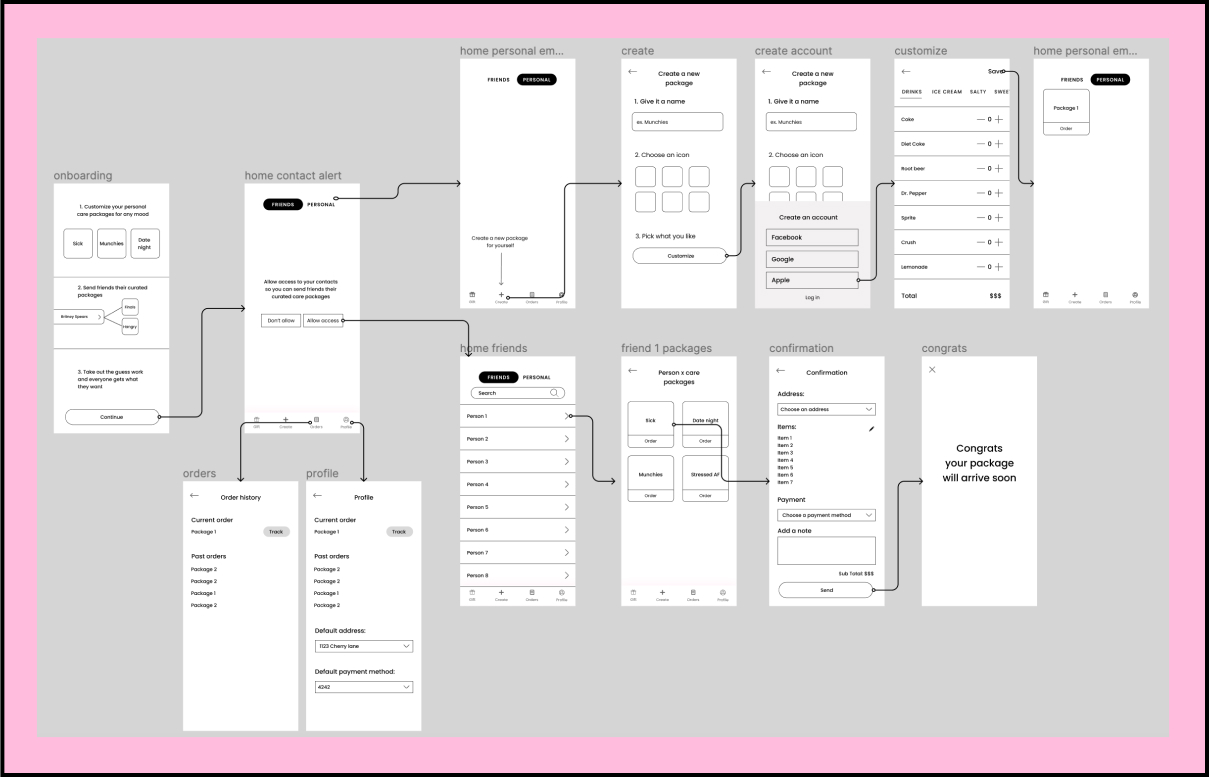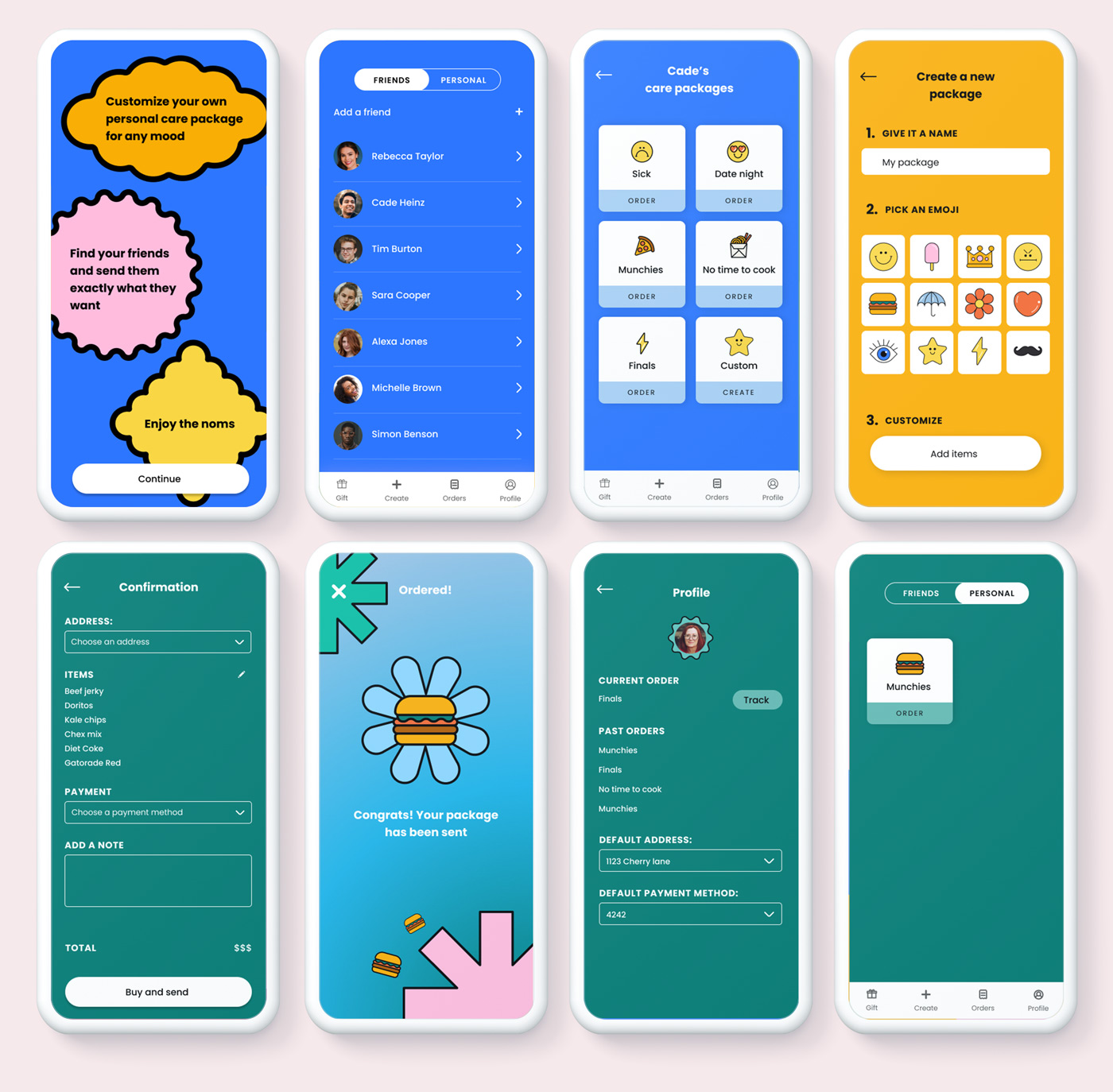Who is our audience?
24-35 year old millennials who have some disposable income with friends spread out in location and/or
parents who have a child in college or living out of the house
When/where do they interact with this product?
Each event is a potential trigger; date night, hangovers, sickness, finals etc. Triggers should occur on the date of delivery.
Users can be laying in bed, sitting on the couch, out and about
How does this influence the design?
Because users can be doing a variety of tasks we wanted to make the ux as simple as possible to order a package. Easily search for your friends, see their packages and tap to order.
To minimize first time user drop-off and increase time to value, we have included an option to create an account or just explore while logged out. If a user wants to send a package they’ll be prompted for login, but they can still explore the app without signing in. Asking a user to create an account and enter payment details upfront can be a turnoff. I believe this can keep people in the app longer, get them invested and then provide contextual information when we want them to enter their credit card details or address.
Customer satisfaction will need to be measured by in app rating metrics after a purchase or after a delivery.
Ease of use will be evaluated by customer feedback, and hotspot / tap tracking
